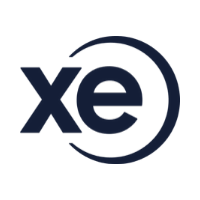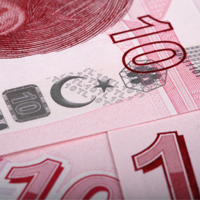What is the Interbank exchange rate, and why does it matter?
03-12-2020 | treasuryXL | XE |
Have you sent money overseas with a bank, or are you planning to? Then it’s important that you understand what the interbank exchange rate is and how it might cost you more money.
What is the Interbank exchange rate, and why does it matter?
In a survey earlier this year, 74.8% of you stated that you preferred using banks to send your money overseas (even if you used Xe to check the rates beforehand). Here’s the problem: the rates you see with Xe are not the rates that you’ll get when you choose to use the banks for your money transfers. And while we’ll get deeper into it later, we just want to let you know—the exchange rates the banks use will likely end up costing you more money.
Every foreign exchange and money transfer provider will have their own rates. When banks exchange money with one another, they use what’s called the interbank exchange rate. What is that, why do they use it, and what does that mean for you? Let’s explore that.
What is the interbank exchange?
The interbank exchange market, simply put, is where the banks exchange currencies with one another. It’s the top-level foreign exchange market. The Electronic Broking Service, which is a division of CES Financial, and Thomson Reuters are the two biggest names in the electronic foreign exchange market. This market is largely informal. There is no central trading location and no regulatory oversight body.
Central banks in different countries usually set domestic interbank exchange rates. Since the Federal Reserve is the closest thing to a central bank in the U.S., the Fed determines the exchange rate for transfers which originate in the U.S.
On any given day, the forex (foreign exchange market) handles about $5 trillion USD in transactions, making it the world’s largest financial market.
What about the Interbank exchange rate?
It’s exactly what you’d think it is—it’s the rate that banks use when they exchange large quantities of currency with each other. There’s no singular, universal interbank exchange rate—each bank can and will set their own rate, and the rates will naturally fluctuate in response to fluctuations in currency values.
Who determines the Interbank rate?
This fee, which can also be known as the spot rate, mid-market rate, or real exchange rate, often fluctuates minute by minute. In the United States, the Federal Reserve controls this fee, as well as the interest rate. In 2008, at the beginning of the Great Recession, the Federal reserve slashed the foreign transfer rate to .05 percent, in order to encourage funds transfer and investments. Since then, the prime rate has inched up to about 2.5 percent. But, as with interest rates, the prime foreign transfer rate is hardly ever available to consumers.
In everyday terms, the basic rule is that the Interbank foreign transfer rate is the midpoint between the selling rate and buying rate for a particular form of currency at a particular time. Currency brokers usually determine this rate, which is one reason is so subjective. Other factors which influence the fee amount include:
-
Bid-ask spread, which is a subset of supply and demand,
-
Domestic and foreign trade deficit or trade surplus,
-
Inflation and interest rates in a particular place,
-
Economic and political stability, or the lack thereof, and
-
Size of government debt.
Bad news on any of these fronts usually causes transfer rates to increase dramatically. Good news typically reduces the rate, but the effect is not as dramatic. So, based on this knowledge and the current official interbank foreign transfer rate, which a cursory Google search should reveal, you can estimate what the consumer rate should be. Use this estimate when you shop around to find the lowest fee.
In 2019, the Fed stated that it planned to keep the interbank exchange rate at 2.5 percent at least through 2021. The coronavirus outbreak might convince the Fed to reduce the rate. Or, the opposite could happen. The Fed could suddenly decide to raise the rate, largely based on the aforementioned factors.
These factors are important because the interbank exchange rate is not just a supply-and-demand issue. The Fed manipulates the rate to further its monetary policy goals. These goals could change quickly, as the Fed Board of Governors is populated by political appointees.
What this means to you
Technically, a few large international banks, such as Chase, HSBC, and Citibank, can offer their customers the prime interbank exchange rate. But this rate is only available to customers with excellent credit who make gargantuan transfers, like payroll transfers.
The aforementioned interbank transfer rate markup varies, but it is usually between 4 and 6 percent. If you regularly send money overseas, these nickels and dimes quickly add up to quarters and dollars.
Why is the interbank exchange rate marked up?
The rise of PayPal and other FinTechs, along with increased regulatory scrutiny, is expected to decrease banks’ income. Most likely, user fees will make up the difference. Domestic account fees, mostly NSF charges and non-bank ATM charges, make up the bulk of these fees. When it comes to foreign electronic funds transfers, the interbank exchange rate takes center stage.
Foreign electronic transfer fees are a bit like interest rates. The prime interest rate, which is the fee the Federal Reserve charges to loan money to banks, is always lower than the consumer interest rate. Since the Fed also sets the interbank exchange rate in the United States, the procedure is similar. The interbank exchange rate, which is the fee Wall Street bankers charge for huge funds transfers, is always lower than the consumer rate.
Generally, financial institutions raise the interbank exchange rate partially because they can, and partially because they fear the risks of international funds transfers.
The “spread”, and how it impacts what you get from your money transfers
Perhaps the most important interbank exchange rate fee might not appear in your transaction detail proposal or statement. The exchange bank works with currency bid and ask prices.
-
The bid price is the selling price,
-
The ask price is the buying price.
The difference between these two prices, which is often substantial, is called the spread. The spread allows currency brokers to buy your currency at a discount and sell it at a profit to a third party in another country.
The spread is like a surcharge which does not appear in the transaction detail. Assume you send $1,000 USD to Russia. The recipient probably expects to receive ₽7,650, minus the transfer fee, which is probably between 6.5 and 10.5 percent. That’s already a pretty hefty fee. However, because of the spread, your friend or colleague in Moscow could receive substantially less.
In many cases, brokers make more money off the spread than they make off the transfer fee. That’s especially true if it is a relatively slow day on the market, as are most Mondays, Tuesdays, and Wednesdays. During these periods, the lower number of buy-sell orders significantly increases the spread, at least in many cases.
Additionally, currency is the most liquid of all traded financial assets. Liquidity, or the lack thereof, is one of the most important spread factors.
Get in touch with XE.com
About XE.com
XE can help safeguard your profit margins and improve cashflow through quantifying the FX risk you face and implementing unique strategies to mitigate it. XE Business Solutions provides a comprehensive range of currency services and products to help businesses access competitive rates with greater control.
Deciding when to make an international payment and at what rate can be critical. XE Business Solutions work with businesses to protect bottom-line from exchange rate fluctuations, while the currency experts and risk management specialists act as eyes and ears in the market to protect your profits from the world’s volatile currency markets.
Your company money is safe with XE, their NASDAQ listed parent company, Euronet Worldwide Inc., has a multi billion-dollar market capitalization, and an investment grade credit rating. With offices in the UK, Canada, Europe, APAC and North America they have a truly global coverage.
Are you curious to know more about XE?
Maurits Houthoff, senior business development manager at XE.com, is always in for a cup of coffee, mail or call to provide you detailed information.
Visit XE.com
Visit XE partner page











